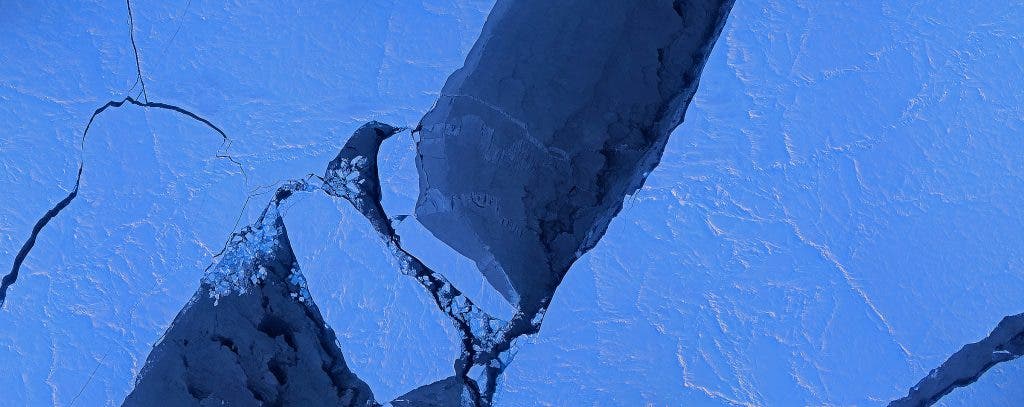
An image mosaic of sea ice in the Canadian Basin, taken by Operation IceBridge’s Digital Mapping System on Mar. 28, 2014. Image: Digital Mapping System/NASA Ames
Arctic sea ice has seen a sharp decline over the past four decades, as the sea ice cover is shrinking and thinning, making scientists think an ice-free Arctic Ocean during the summer might be reached this century. According to researchers at the National Snow and Ice Data Center (NSIDC) and NASA the arctic region is experiencing longer melting seasons, which exposes it to more sunlight energy, causing some places to melt by up to four feet in ice cap thickness.
“The Arctic is warming and this is causing the melt season to last longer,” said Julienne Stroeve, a senior scientist at NSIDC, Boulder and lead author of the new study, which has been accepted for publication in Geophysical Research Letters. “The lengthening of the melt season is allowing for more of the sun’s energy to get stored in the ocean and increase ice melt during the summer, overall weakening the sea ice cover.”
A thinning Arctic ice cover
Stroeve and team studied Arctic sea ice evolution from 1979 to present day using microwave data from NASA’s Nimbus-7 Scanning Multichannel Microwave Radiometer, and the Special Sensor Microwave/Imager and the Special Sensor Microwave Imager and Sounder carried onboard Defense Meteorological Satellite Program spacecraft.
[ALSO READ] Melting polar ice makes way for new shipping routes
Like all matter, snow grains in the Arctic emit radiation which satellites can pick up. These satellites are sensitive enough to catch spikes caused by water presence, which occurs during the melting season. Using a complex mathematical formula, scientists can measure changes in the ice’s microwave emissivity. Results show that the Arctic region is exposed to more melt at both ends – earlier melt onset in the spring and a later freeze-up in the fall, the latter being of greater consequence.
The snow ball effect – only less snow
This is an accelerated process, as this trend has been shown to be going on for decades. This is because as the sea ice is getting thinner, the cover become less reflective. Also, the young ice is flatter, allowing the dark melt ponds that form at the early stages of the melt season are able to spread more widely, further lowering its albedo [the incoming light reflected by ice and the ocean].
Some areas are more vulnerable than others, like the Beaufort and Chukchi Seas which are freezing up between six and 11 days later per decade. The timing couldn’t actually be worse for the Arctic which during the melting seasons has the most powerful sunlight coming in of the year. This impacts the oceans, which absorb more solar radiation and turn warmer. On average, the Arctic melt season has lengthened on average by five days per decade from 1979 to 2013.
“There is a trend for later freeze-up, but we can’t tell whether a particular year is going to have an earlier or later freeze-up,” Stroeve said. “There remains a lot of variability from year to year as to the exact timing of when the ice will reform, making it difficult for industry to plan when to stop operations in the Arctic.”
“If air and ocean temperatures are similar, the ocean is not going to lose heat to the atmosphere as fast as it would when the differences are greater,” said Linette Boisvert, co-author of the paper and a cryospheric scientist at Goddard. “In the last years, the upper ocean heat content is much higher than it used to be, so it’s going to take a longer time to cool off and for freeze up to begin.”
Findings were reported in the journal Geophysical Review Letters.









